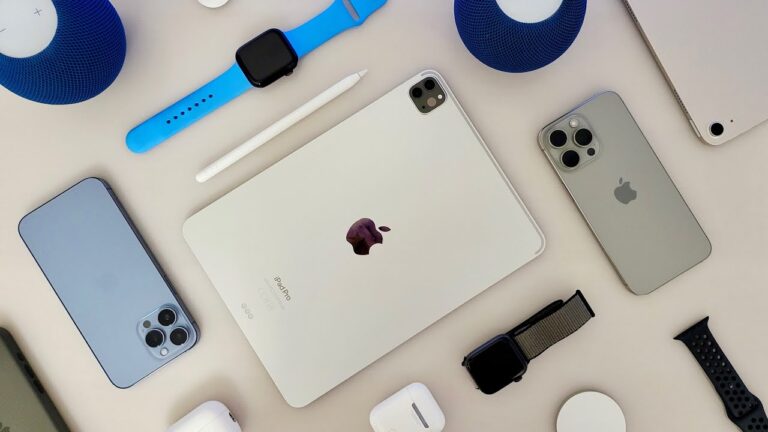iPhone 6 just as profitable as the 5s despite bigger screen.
- The screen of a mobile device is by far the biggest single cost element of any mobile device.
- Hence, when Apple launched the iPhone 6 and 6+, my immediate reaction was that the BOM (Bill of Materials) would rise pressuring gross margins.
- However, I also expected that higher volumes of phones would also offset any weakness in gross margin through operating leverage. (see here)
- However, it appears that Apple has gone one better by managing to offset the higher cost of a larger screen through lower component costs elsewhere in the device.
- The first tear downs have been released and the BOM’s are not massively different (excluding storage) from the iPhone 5s at $200-$247. The iPhone 6+ comes in at $216-$263 with Apple paying around $0.47 per GB of storage. (IHS).
- By comparison the BOM of the iPhone 5s was $199 to $218 at the time of launch.
- This gives gross margins of 69% or70% depending on the model purchased which is roughly in line with the iPhone 5s.
- The screens are being sourced from LG Display and Japan Display and are estimated to cost $45 for the 6 and $52.50 for the 6+. (IHS).
- This is meaningfully higher than the $41 that the iPhone 5s screen costs and I suspect that Apple has used a combination of Moore’s Law and its huge purchasing power to put pressure on suppliers of its other components.
- With gross margins essentially flat compared to previous generations, operating leverage generated by higher shipments from market share gains will now flow directly to the bottom line.
- This is good news for Apple but not so good for its suppliers.
- Apple’s resurgence over the last few quarters will have increased its desirability as a customer giving it more scope to procure components at lower prices.
- While this is great news for Apple and its shareholders in the short-term, suppliers that have had to fight hard to get into the device are likely to be feeling the pinch.
- I am pretty optimistic on the outlook for Apple in the short-term but I still have concerns regarding the long term profitability given its weak position in Digital Life.









Blog Comments
Walt French
September 24, 2014 at 6:03 pm
“ This is good news for Apple but not so good for its suppliers…suppliers that have had to fight hard to get into the device are likely to be feeling the pinch.”
For some reason it’s always Apple, rather than the dynamics of a particular market, that is the problem.
By a quick SWAG, Apple buys less than 10% of all the small-screen displays, and less than 5% of the large-screen displays. And by reports, the display industry is highly concentrated; by my recollection fewer than 5 players account for most of the production. E.g., Samsung controls a large share and sets prices aggressively; LG and Sharp reportedly get lesser shares (while still being quite large) and profits (while not).
The industry has typical tech problems: technology is changing rapidly, so firms which don’t ramp up quickly to make the newest screens, find themselves having to sell lower-profit screens, making it harder to recoup their investments. Also, rolling out mass production of any given tech has been beset with problems.
By reports, Apple looks for very high quality screens (for which anybody pays some kind of premium), and establishes long-term relations to ensure steady production volumes. Apple’s financial reports show that they buy huge amounts of equipment that is NOT in an Apple factory; given the weak profitability and investment challenges outlined above, the claim that Apple’s suppliers suffer from Apple’s success seems AWFULLY bass-ackwards.
windsorr
September 25, 2014 at 10:05 am
Hi Walt. Its not in the screens where I think the pressure has been felt. The prices there are up meaningfully compared to iPhone 5. I think that Apple has pressured elsewhere where the market has more suppliers and where it is more commoditised. Sorry If that was not clear.
Walt French
September 25, 2014 at 7:44 pm
Well, you only called out the display prices, and that industry has been in trouble, so let’s review the Teardown list of components.
CPU? TSMC turns away business; Apple courted them for years and had a tiny number of alternative foundries. RAM or Flash Memory? Same tiny fraction-of-purchases by Apple and concentrated suppliers. Batteries? Again, Apple a tiny share and there are very large suppliers who are happy to have Apple business but likely have similar profit margins across the board. Camera? Apple apparently pays top dollar for Sony quality, capability and volume. Radios? Qualcomm is undoubtedly pleased to have Apple’s business but is still in the driver’s seat regards the tech.
Now we’re getting down, cost-wise, to little tiny screws, circuit boards and the like. Without a single example of an industry where Apple can put the hurt on a supplier, in a way that Samsung, Lenovo, Xiaomi, LG, HP or dozens of others couldn’t, just as well.
The claim that Apple bullies suppliers is old, but I’ve never seen any logic how it could work. You’d do us—and your reputation—a favor by either documenting, or hammering a stake thru the meme.